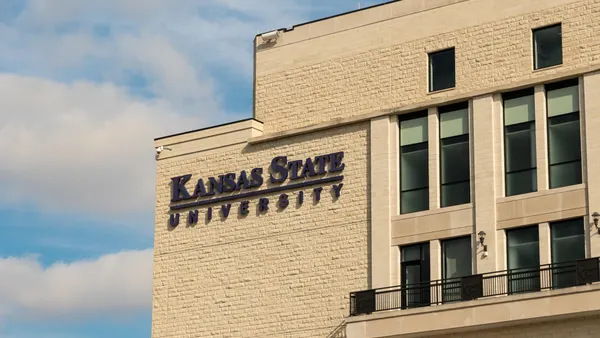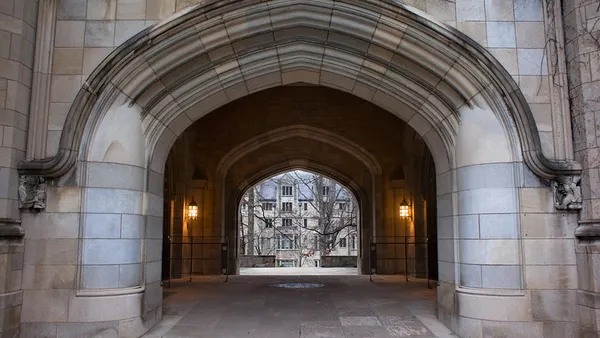Dive Brief:
- Drake University, a private nonprofit in Iowa, is weighing academic and faculty cuts under a plan to eliminate its multimillion dollar budget deficit for fiscal year 2025. The institution intends to "tighten the curriculum" and cut most low-enrolled class sections, according to November meeting minutes from Drake's faculty senate.
- The university is also looking to eliminate most adjuncts, only keeping those with specialized expertise crucial to the curriculum. Drake spent $1.5 million on adjunct salaries and benefits last year.
- Drake will enlist academic chairs and the faculty senate, including its budget and executive committees, to guide recommendations for cuts, per the minutes. The faculty senate is scheduled to discuss the report from its budget committee at its monthly meeting next week.
Dive Insight:
The university's budget for fiscal year 2024 left the institution with a $4.3 million shortfall, even though Drake trimmed its staff and nonpersonnel spending — such as travel and faculty and staff development — by almost $3 million. That included eliminating two staff positions and making $550,000 in permanent cuts. A large share of the budget reductions, however, were temporary.
Provost Sue Mattison noted that all university departments, not just academic affairs units, made cuts. But Drake's board of trustees only approved the fiscal 2024 budget with the understanding that the deficit would be eliminated by fiscal 2026.
For that to happen, a plan must be in place for fiscal 2025, the faculty senate notes said. The university expects a $10.3 million budget deficit for that year, which includes adding back temporary reductions made earlier, Drake President Earl Martin said during the meeting, according to the minutes.
While Drake doesn’t need to completely eliminate the deficit in fiscal 2025, it does need to have a balanced budget by the following year, per the minutes.
The board of trustees is set to finalize Drake's fiscal year 2025 budget in January.
Like many private colleges, Drake has struggled with declining enrollment. In fall 2012, Drake had almost 5,300 students, according to federal data. A decade later, its enrollment dropped to just under 4,700 students.
"As a tuition-dependent institution, the operating budget is predicated on tuition dollars," the minutes said.
In previous years, the university had set its budget expecting 800 first-year students. But in fiscal year 2024, it planned for just over 600 first-years.
Although university leaders are ramping up enrollment efforts and introducing new programs like nursing, these moves alone will not balance the budget. Even increasing first-year enrollment by 100 students would not correct the issue, according to the meeting notes.
"We are at the point where we have to cut academic programs," according to a quote from the minutes.
Faculty and university leaders will look to other universities going through similar downsizing processes, the minutes said. One such institution, Southern Oregon University, released a four-tiered plan in August, outlining plans to manage costs and diversify revenue. It called its current way of doing business "structurally flawed."














